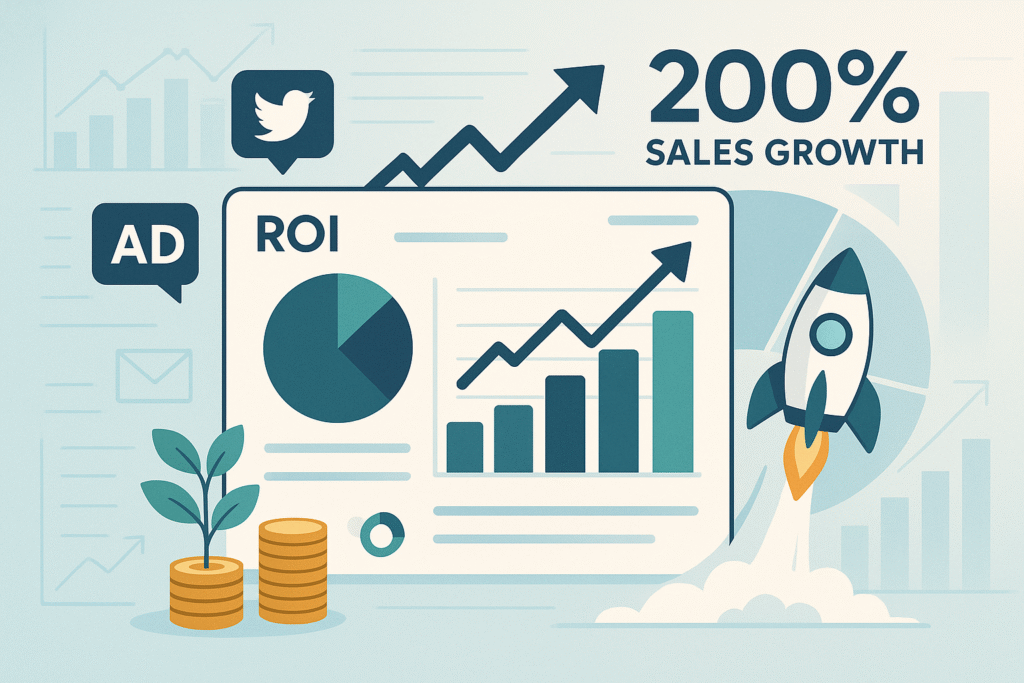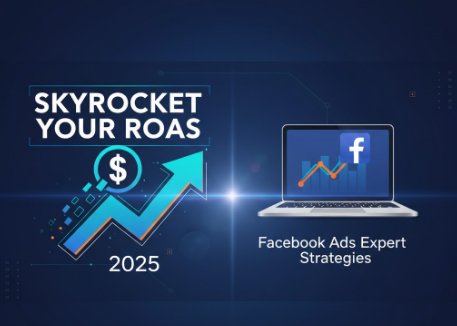A disciplined ROI-driven marketing framework Asad Nazir grounded in data, fast testing, and ruthless budget reallocation, unlocked a 200% lift in sales in 120 days, while cutting blended CPA by 36%. Here’s exactly how we did it, step by step.
The Starting Point: Revenue Plateau, Rising CPA
The client (a mid-market e-commerce brand with consistent traffic but stagnant growth) came in with a common story:
- Ad spend rising, no proportional sales lift
- Attribution messy, no single source of truth
- Content strategy built on frequency, not performance
- Email/SMS underutilized; zero lifecycle segmentation
- No standardized marketing ROI analysis cadence
They asked for one outcome: “Make every dollar perform.” We proposed a ROI-focused marketing approach with weekly accountability and monthly compounding gains.
Hypothesis
- A data-driven marketing system, clear tracking, clean baselines, would surface the 20% of activities delivering 80% of revenue.
- Rapid test cycles across offers/creatives/landing pages would drive marketing ROI growth within one quarter.
- Reallocating budget from low-yield channels to performance-based marketing bets would scale profitably.
The Playbook (What We Implemented in 4 Weeks)
1) Measurement & Truth-Set
- Tracking overhaul: Server-side tracking + consistent UTM taxonomy across paid, organic, influencer, and email.
- Attribution alignment: Last-click for sanity checks; data-driven model in GA/BI for real planning.
- North-star KPIs: MER (blended ROAS), CPA by cohort, and incremental revenue from owned media.
2) Offer & Funnel Audit
- Analyzed 12 months of SKU sales, margins, refund rates.
- Isolated three hero SKUs with best contribution margin.
- Rebuilt the funnel: ad → problem-solution landing → social proof → risk-reversal → cart.
- Introduced price-anchored bundles and a 48-hour “first-purchase bonus” to lift conversion.
3) Creative Engine (Weekly Sprints)
- Built a results-driven marketing campaign framework: test 6 hooks, 4 angles, 3 CTAs weekly.
- Sourced UGC + expert voiceover; added credibility badges + quantifiable outcomes.
- Created “Why Us vs. Them” visual for instant positioning.
4) Channel Reallocation
- Scaled Meta and Google Shopping (profit-positive)
- Trimmed broad YouTube awareness to retargeting & mid-funnel explainers
- Paused underperforming native networks after 2 cycles of no lift
5) Lifecycle & Retention
- Built email/SMS automation around behaviors: browse abandon, cart abandon, first-purchase nurture, 30/60/90-day replenishment.
- Segmenting by AOV and category interest increased owned-media revenue share by 22%.
6) CRO & Landing Page Iterations
- Swapped generic hero for benefit-led headline + proof (stars, reviews, press logos).
- Reduced fields on checkout; introduced express pay.
- Added “As seen in” and “Real results” modules above the fold.
- A/B tested urgency copy vs. value-stack; value-stack converted best long-term.
| Metric | Day 0 Baseline | Day 120 | Change |
| Sales (units) | 1.0× | 3.0× | +200% |
| Blended CPA | 1.00× | 0.64× | −36% |
| MER (Revenue/Spend) | 2.2 | 3.4 | +55% |
| Email/SMS Share of Rev | 12% | 22% | +10 pp |
| CTR (best-of-week ads) | 0.9% | 2.1% | +133% |
| LP Conversion Rate | 2.2% | 4.8% | +118% |
Key unlocks: a) strict offer discipline, b) rapid creative iteration, c) weekly budget moves driven by marketing ROI optimization, not opinion.
The ROI-Driven Marketing Framework (Repeatable)
A) Define the Economic Model
- Contribution margin by SKU/bundle
- Break-even ROAS and target CPA
- LTV by cohort (ad vs. organic; first-time vs. returning)
- Acceptable payback window (e.g., ≤60 days)
We translate this into channel-level guardrails: if a campaign can’t hit the target CPA by Sprint 2, it’s trimmed or re-angled.
B) Test, Learn, Scale (TLS) Sprints
- Hypothesis: What outcome will a new angle/offer/format drive?
- Design: 6–9 creatives + 2 landing variants per sprint
- Deploy: Small budgets, win-rate benchmark set in advance
- Decide: Keep/kill/scale—no “maybe” campaigns
- Document: Learning logs feed the next sprint
C) Channel Roles
- Meta: Prospecting with bold hooks; creatives refreshed weekly
- Google: Capture (Shopping & Search) and high-intent DSA
- YouTube: Mid-funnel explainers + retargeting
- Email/SMS: Margin moat; “turn up the owned media” in promo cycles
- Influencer/Affiliate: Whitelist best creators into paid ads
D) Creative Principles That Won
- Speak to the problem, not the product
- Lead with numbers (time saved, cost saved, outcomes achieved)
- Social proof within 3 seconds (stars, testimonial quote, rating count)
- Pattern-break thumbnails and opening frames
- “Proof stack” near CTAs (guarantee, FAQs, returns)
A Closer Look at the Numbers
ROI Math (simplified):
- Incremental revenue over 120 days: +200% vs. baseline
- Media spend grew 40% (but reallocated to high-yield)
- Blended CPA down 36%, pushing MER from 2.2 → 3.4
- Net impact: profit per order +42%, total profit more than doubled
Why it matters: ROI-driven marketing isn’t about spending less; it’s about spending where returns compound and stopping what doesn’t move the P&L.
Four Pivotal Decisions (That You Can Copy)
- Kill vanity metrics. We measured cash efficiency (MER, CPA to payback, contribution margin), not views or clicks.
- One truth-set only. When GA, platform numbers, and finance differed, we reconciled and then planned to one number.
- Creative is a product. Weekly “creative sprints” beat sporadic content drops. Quality and quantity win.
- Own the audience. Every paid spike fed email/SMS segments, so each promo cycle got easier and cheaper.
What Didn’t Work (and Why)
- Evergreen “brand” ads with soft claims underperformed. Buyers needed concrete outcomes and proof.
- Over-segmented prospecting throttled scale. Broader audiences + sharp creative did better.
- Discount heavy promos spiked orders but hurt margin. Value-stack + bonus maintained contribution.
Action Plan: Implement ROI-Driven Marketing in 14 Days
Days 1–3: Tracking, UTMs, BI dashboard, LTV & margin calc
Days 4–7: Offer stack + funnels, first 9 creatives, 2 landers
Days 8–10: Launch TLS Sprint 1 across Meta + Google
Days 11–12: Email/SMS automations live (browse/cart/replenish)
Days 13–14: Cut losers, scale winners, prep Sprint 2
By Day 30, you should see directional CPA improvements and a clearer path to scale.
Should You Use This Approach?
Choose ROI-driven marketing if you want:
- Predictable scale without chaos
- Decisions powered by data, not opinions
- Creative that’s accountable to outcomes
- A system you can run forever, not a one-off campaign
If you prefer “set and forget,” this isn’t for you.
Want These Results in Your Business?
If you’re ready to implement a ROI-driven marketing system that compounds profit, let’s talk.
→ Buy my services (done-for-you growth sprint + ongoing optimization).
You’ll get: tracking + truth-set, offer/funnel rebuild, creative sprints, channel reallocation, lifecycle revenue, and weekly ROI reports.

